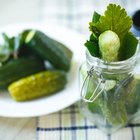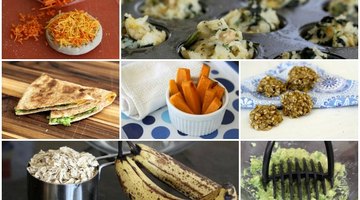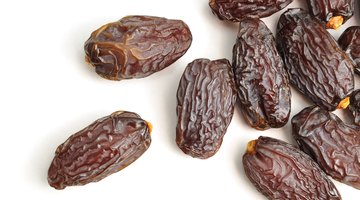Should Toddlers Have Ham?
Feeding an infant is so easy, isn't it? Unless your baby has an allergy to lactose, the menu options are pretty simple: lift maternity shirt and feed. But when your little one gets into the toddler years the variety -- and the dangers -- increase exponentially. What's good and what isn't good for your toddler? Some things are obvious, of course; we all know an apple is a better snack choice than a bag of chips. But what about other options, such as ham and lunch meats?
Grow, Baby, Grow
Your toddler isn't going to grow as rapidly now that he's left the baby stage but his internal motor is still on high-gear. Your little one is probably going to need to eat between 1,000 and 1,400 calories a day, says Kids' Health, and between two and four ounces of meat or beans each day for protein. The good news about ham is that it provides about 18 grams of protein per four ounce serving, which provides plenty of muscle-building power for a growing child.
About That Sodium...
Can Pregnant Women Eat Steak?
Learn More
There are also a few downsides to ham, as well. The biggest downside is -- you've got it -- sodium. The levels of salt in cured and lunch meat ham are astronomical. Just as an example, one four-ounce serving of ham from a commercially precooked honey ham contains a whopping 1,020 mg of sodium. Right there, one serving of this ham will include more sodium than a toddler should have in any one day. A toddler should have no more than 1,000 mgs of sodium a day. That's like giving your toddler a fast food burger. Another worry is the level of preservatives that keep lunch meat from going bad. Manufacturers use chemicals, such as sodium nitrate to extend ham's shelf life. While it may keep ham looking pink and pretty in the grocery store, it may not be something you want to add to your little one's diet.
Healthier Alternative
It can certainly save time to reach for pre-packaged meat, but a little preparation can lead to healthier food choices that you'll feel a lot better feeding your tyke. Roast chicken breast without the skin, for example, packs a protein punch of 43 grams per one cup serving but only 104 mg of sodium. An added bonus is that you control the amount of sodium since you're the one doing the cooking. Roasting a chicken yourself and refrigerating the meat after you've sliced it gives you plenty of healthy, lean meat to serve your little one without the worry of added chemicals and preservatives.
Sometimes You've Got To

Should Toddlers Eat Pickles?
Learn More
When it comes down to it, sometimes we're forced to make less-than fabulous choices. We might have to make a run through a fast food drive thru for an order of fries for our little one when we're in a rush, and sometimes making a quick ham sandwich for a hungry mouth is all we can do when we're in between doctors' appointments and soccer practice. The key is moderation. Keep the not-so healthy choices to a minimum but don't beat yourself up if it's all you can do when you're rushed. After all, no one said having a toddler in your life was going to be easy!







